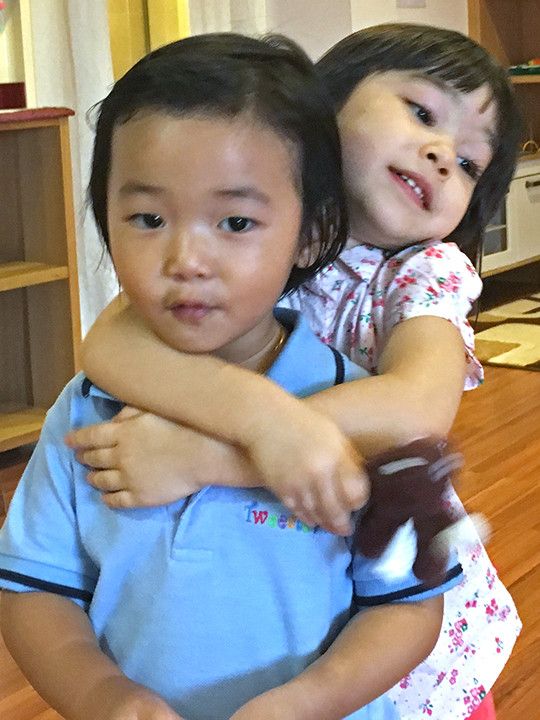Written by Pamela Hickein, Creator of Tweedlewink and Wink 
As a right-brain educator, I’m often asked how to nurture values in a child from the very beginning stages of life. Because the right brain is the emotional brain, and our type of learning involves sensitivity and love, this is a part of what we teach. Our TweedleWink™ school motto is “Relationships before results” because the right brain opens and blossoms in a loving relationship. Simply put, children can absorb vast amounts of information when they feel happy and respected. But we cannot teach this from our classroom alone.
Compassion begins with you. As parents and teachers, we teach morals and values through what we do, how we treat others and by everything we say to our children. Do you want your child to be compassionate? Then you need to ask yourself, “How compassionate am I?” This is such an important question.
Let me share a story with you. One day in class, 4-year-old Michael slipped and hit his head on a low bookshelf. It was amazing to me to see the number of children who gathered around him to offer him comfort, a towel, a toy, a hug. Children express compassion quite naturally, so almost all the children were readily giving him comfort.
However, in another part of the room, 5-year-old Jeremy avoided the scene and kept playing, choosing toys that were finally made available by the other children’s absence. He didn’t seem to care about his friend. As the compassion of the others had touched my heart, his aloofness also made an imprint. I knew Jeremy well.

He had been in our preschool about two years by that time. What impressed me was how his tender heart had changed over time due to how he was raised at home. Seeing how indifferent he was to his friend’s suffering showed how it had influenced his behaviors and view of others.
His parents owned a business that required them to travel frequently and leave him in the care of others. When he had just joined us at about three years of age, his parents had dropped him off at school before taking flights away for the week. When they said goodbye to him, he sobbed and wouldn’t let go of his mother’s coat. She became impatient and angry. “Jeremy, we went through this before,” she explained. “Daddy and I have work to do in Los Angeles. Stop crying. Don’t be a crybaby.” She unclasped his hands from her coat and left.
The teachers took turns holding him and trying to cheer him up that day, but of course, none of us were adequate substitutes for his mother.His mother, with best intentions, was trying to prepare him for a harsh world. However, loving-and kind treatment would have been a better approach. The world will always be harsh. We can console our children and advise them how to navigate through it. We can be the beacon of hope and love and protection for them. But if we are also the source of their battering, we handicap them from the start.
We must choose love.
Model lovingkindness. Teaching children how to brighten their tiny corners of the world with love and joy is key to making the world a better place. To teach children how to be loving and kind, we must model it ourselves. We teach sensitivity through respect, carefulness, gentleness and dignity. Then we do our best to make sure that your TweedleWink experience comes home with you!
















![[St. Joseph’s Institution International School Malaysia] The Lasallian Education Ethos for a Better Future - Gratitude and Giving](https://mint-edm.sgp1.digitaloceanspaces.com/production/PPIxso2IiVm1U64SEHCuXjI03yE7Rg.jpeg)




















